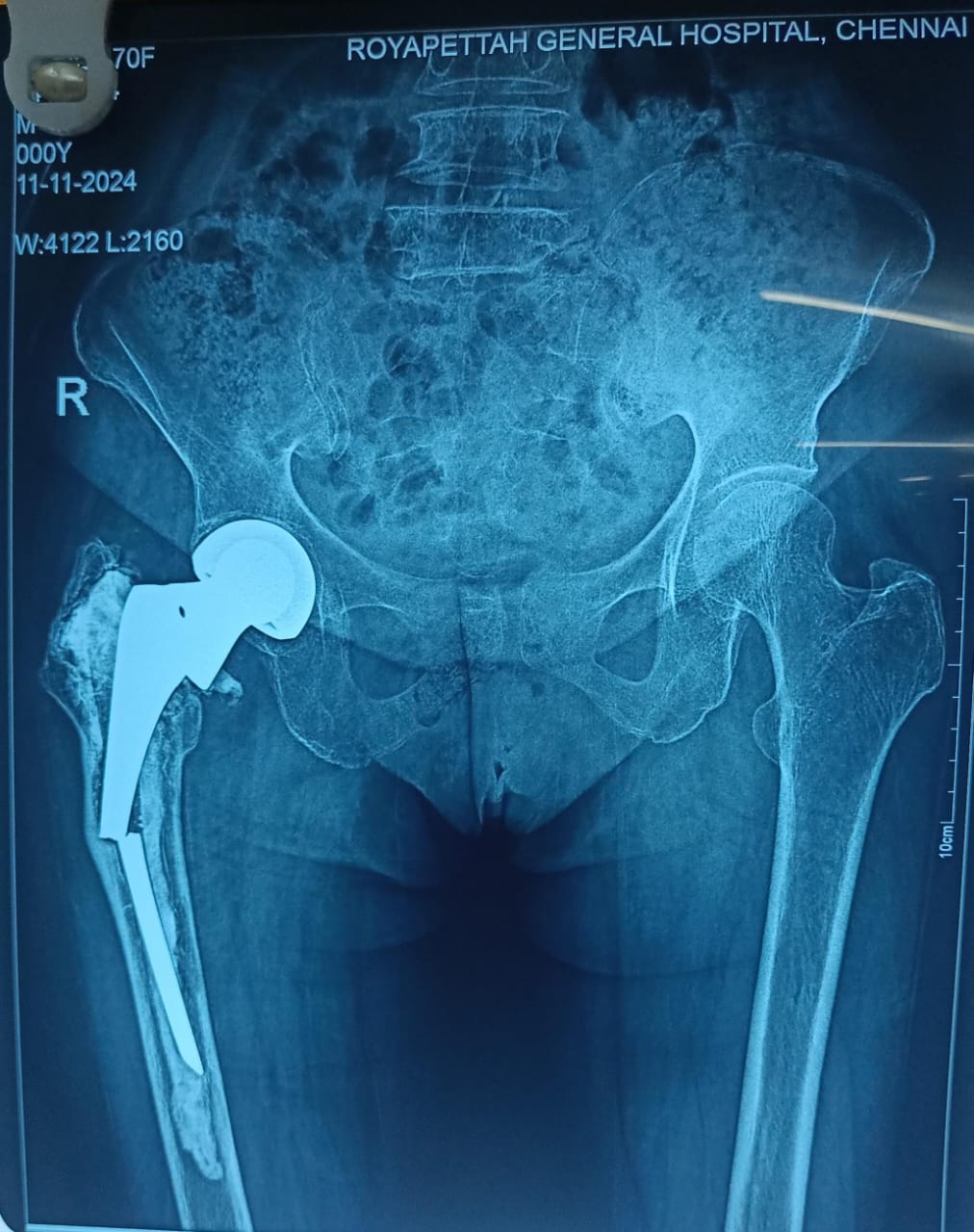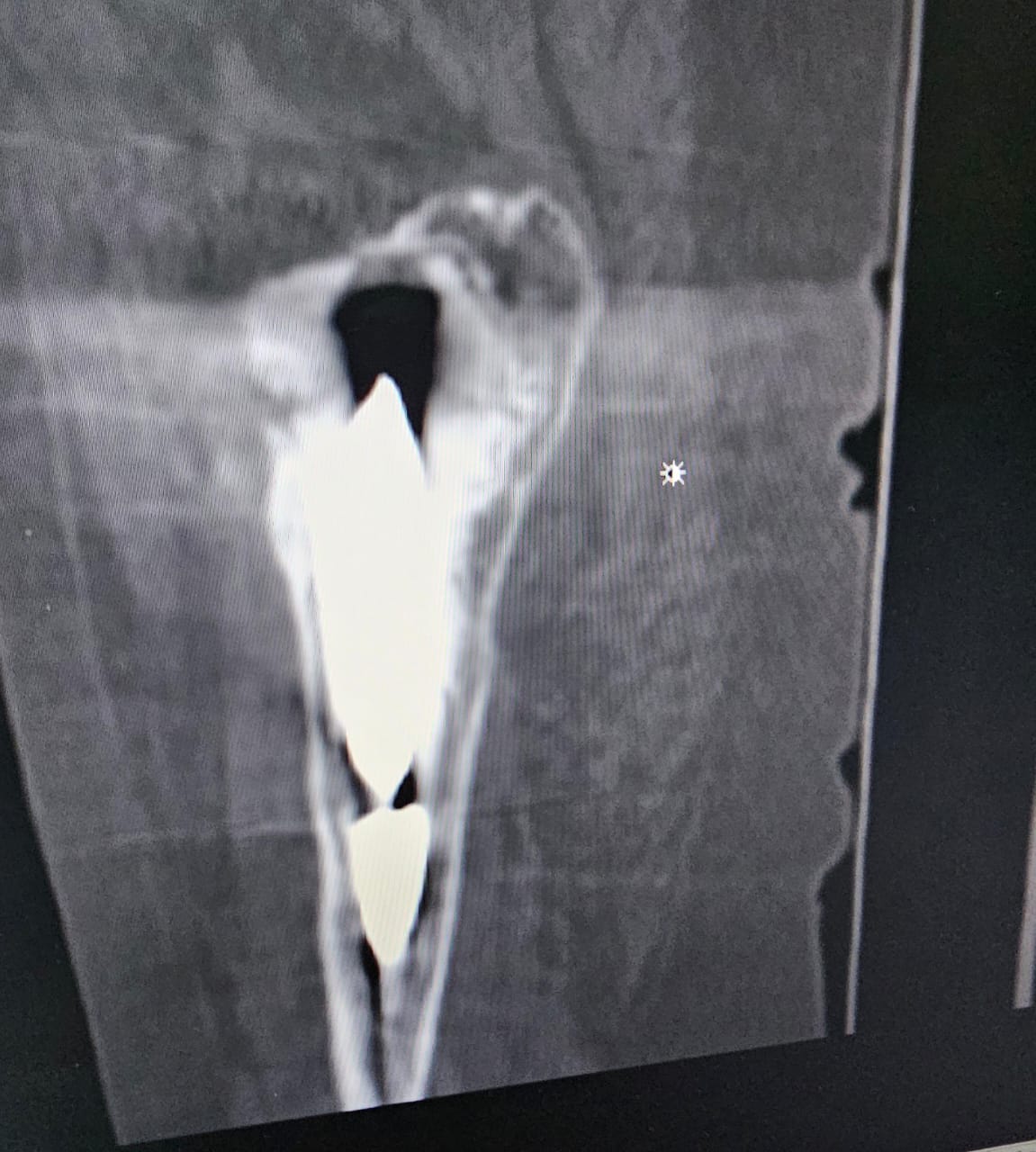
Discussion.
1. Biomechanical principles behind stem failure - why fracture at the mid stem level
2. Cement Mantle loosening
3. Revision options - How to remove the stem - Tools needed
4. Implant options - cemented or un-cemented and problems with each of the stems
5. Additional fixation options ,
6. role of Bone graft
1. Biomechanical principles behind stem failure - why fracture at the mid stem level
2. Cement Mantle loosening
3. Revision options - How to remove the stem - Tools needed
4. Implant options - cemented or un-cemented and problems with each of the stems
5. Additional fixation options ,
6. role of Bone graft
We have to consider
- Obvious implant loosening. The distal end of the implant is fixed and movement occurs at the junction of stable versus unstable leading to eventual stress fracture.
- Removal of the proximal end of the implant is easy. But the distal end may be problematic. Extended trochanteric osteotomy or windowing the femoral shaft my assist
- This may cause shaft weakness that will need to be reinforced either with a plate or strut graft
- The weak area can be bypassed by a longer stem which may be cemented (my preference) or cementless. Cement in cement means that total cement removal is not necessary
- Proximal impaction grafting would help to reconstitute the proximal femur.



